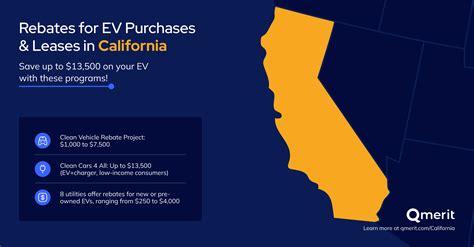Driving Change: 2025 California EV Rebates Aim to Boost Electric Vehicle Adoption
As the world faces increasing environmental challenges and the urgent need to transition to sustainable energy, California is taking significant strides towards promoting electric vehicle (EV) adoption. The state has set ambitious goals, including a target for 100% of new passenger vehicle sales to be zero-emission by 2035. To support these objectives, California is introducing enhanced EV rebate programs that aim to incentivize consumers to make the switch to electric. This article delves into the details of California’s 2025 EV rebates, highlighting their potential impact on the market and the environment.
The 2025 EV Rebates: An Overview
The 2025 California EV rebate program is designed to provide financial assistance to individuals and families looking to purchase or lease electric vehicles. The rebates will vary based on vehicle type, income level, and whether the vehicle is domestically manufactured. This tiered approach aims to make EVs more accessible to a broader audience, ensuring that financial barriers do not hinder the transition to cleaner transportation.
The California Air Resources Board (CARB) has proposed an increase in the rebates from previous years. Consumers will be eligible for rebates ranging from $2,000 to $7,500, depending on their income and the type of vehicle purchased. Higher rebates are available for lower-income households, aiming to address equity in environmental initiatives.
The Importance of EV Adoption
The transition to electric vehicles is not just about reducing greenhouse gas emissions. It also contributes to improved air quality, public health, and energy security. In urban areas, where air pollution is particularly acute, increasing the number of EVs on the roads can lead to significant health benefits for residents, reducing occurrences of respiratory illnesses and other health problems exacerbated by poor air quality.
Moreover, transitioning to an electric fleet can also reduce California’s dependence on oil, aligning with the state’s broader environmental and economic goals. As more renewable energy sources are integrated into the grid, the emissions associated with charging electric vehicles will continue to decline, making EVs an increasingly sustainable option.
Challenges Ahead
Despite the positive outlook, several challenges remain in California’s push for increased EV adoption. One significant barrier is the current state of charging infrastructure. While California has made substantial investments in public charging stations, many rural and low-income areas still lack adequate access. Addressing this gap is crucial for ensuring that all Californians can benefit from the shift to electric vehicles.
Additionally, consumer education plays a critical role in adoption rates. Many potential buyers may have misconceptions about electric vehicle performance, range, and charging capabilities. Robust informational campaigns are essential to demystify EV technology and showcase the financial and environmental benefits of making the switch.
Future Prospects
Looking ahead, California’s commitment to electric vehicle adoption is likely to reshape not only the automotive industry but also urban planning and infrastructure development. As the demand for EVs increases, automakers are ramping up their investments in electric models, with many pledging to transition to a mostly electric lineup over the coming decades.
Furthermore, the 2025 rebate program could serve as a model for other states looking to boost EV adoption. With a focus on equity and accessibility, California’s initiatives may inspire similar programs nationwide, amplifying the impact of these efforts on a national level.
Conclusion
California’s 2025 EV rebate program represents a significant step forward in the fight against climate change and the promotion of sustainable transportation solutions. By providing financial incentives to consumers and working to establish a robust charging infrastructure, California is setting the stage for a cleaner, greener future. As we move towards a more sustainable world, the impact of such initiatives will resonate beyond state lines, inspiring change across the nation and fostering a collective effort to reduce emissions and promote public health.
FAQs
- 1. Who is eligible for the 2025 California EV rebates?
- Eligibility varies depending on income level and vehicle type. Lower-income households can qualify for higher rebates, maximizing accessibility.
- 2. How much can I receive from the rebate program?
- Rebates can range from $2,000 to $7,500, depending on your income level and the vehicle you purchase or lease.
- 3. Are there specific EV models that qualify for the rebates?
- Yes, the program typically includes a list of qualifying EV models, often focusing on those that meet certain environmental and manufacturing criteria.
- 4. How do I apply for the rebate?
- Applications can usually be submitted online through the California Air Resources Board website or through participating dealerships at the time of purchase.
- 5. Will these rebates continue in future years?
- While the current program is set for 2025, ongoing adjustments and funding are expected to continue advancing EV adoption initiatives in California.
Download Ev Rebates California 2025
